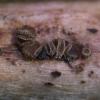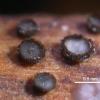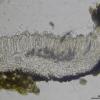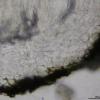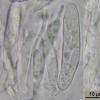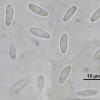
18-12-2025 17:23
 Bruno Coué
Bruno Coué
Bonjour,je serais heureux d'avoir votre avis sur c

18-12-2025 21:17
Pol DebaenstThe identification took me to Byssonectria deformi

18-12-2025 18:07
Margot en Geert VullingsThese plumes were found on rotten wood.They strong

17-12-2025 18:35
 Michel Hairaud
Michel Hairaud
Bonjour à tous/Hi to everyone I am passing along

15-12-2025 15:48
 Danny Newman
Danny Newman
Melanospora cf. lagenaria on old, rotting, fallen

15-12-2025 15:54
 Johan Boonefaes
Johan Boonefaes
Unknown anamorph found on the ground in coastal sa

15-12-2025 21:11
 Hardware Tony
Hardware Tony
Small clavate hairs, negative croziers and IKI bb

15-12-2025 07:09
 Danny Newman
Danny Newman
indet. Rutstroemiaceae sp. on unk. fallen leavesMc
Helotiales on Rhododendron
Hans-Otto Baral,
25-08-2014 16:14
 Hi
Hino idea of the genus or species of this fungus which I found at 2000 m in the calcarean Alps (18.8.2014, Graubünden, S of Scesaplana), on Rhododendron ferrugineum attached decorticated twigs (exposed, completely dry when collected, therefore drought-tolerant).
Ap. rehydr. 350-550 µm diam. Asci *40-50(-65) x 8-9(-10) µm, +33-40(-53) x 7-8 µm, broadly sessile or somewhat narrowed in a longer stalk, without croziers, IKI-. Sp. *8-9.8 x 3-3.3 µm. Paraph. cylindrical, +/- flexuous, *1.8-2 µm wide, apically sometimes forked, without VB-contents. Excipulum of hyaline short-prismatic to anguar cells running under a c. 20-40° angle at flanks, thin-walled, at base slightly gelatinized, at margin a t. porrecta protruding 20 µm beyond hymenium, running out in smooth, hyaline, short, pauciseptate, thin-walled hairs that are often covered by dark yellowish-brown rough exudate.
I do not think that the fungus is mollisioid (Pyrenopeziza), perhaps rather encoelioid or hyaloscyphaceous. My database helps nothing, and also with Remler and B. Eriksson I did not succeed.
Zotto
Martin Bemmann,
25-08-2014 16:35

Re : Helotiales on Rhododendron
Hi Zotto
How about Encoeliopsis rhododendri?
Regards
Martin
How about Encoeliopsis rhododendri?
Regards
Martin
Hans-Otto Baral,
25-08-2014 16:42

Re : Helotiales on Rhododendron
That was among my hopes, but that species has much larger spores (12-20 x 3.5-4.5 in Groves 1969) and no hairs, and grows on capsules and leaves.
Zotto
Zotto

